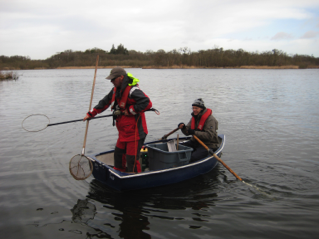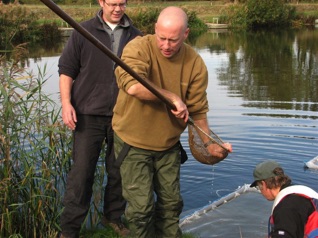



Lake and Reservoir Management
Reservoirs hold significant conservation and recreational value, something Water companies are well aware of and work hard to maintain and develop. Management of these resources is key to their sustainability and ecological value as well as for recreational use. Fishtrack has an established track record of working on lakes and reservoirs used or owned by Water companies carrying out ecological surveys, contributing to management plans and assessing the lakes/reservoirs ecological status, particularly relating to the biology and fisheries ecology of the waterbody.
We address issues at species and population level. We have been involved in a variety of projects ranging from: eel population assessment, determining the status of eel fisheries of conservation value to the species, fisheries assessment, fisheries population estimates, identification of bottle necks in fish recruitment, paucity of spawning habitat assessment, crayfish surveys, identification of non native crayfish and assessment of population size, fish spawning habitat creation and supplementation of spawning habitat with artificial constructs, contributing to eel passage through advice and physical modifications to existing barriers, introduction of eel and elver, fish health assessment through parasite identification and health checks of fish stocks, biological monitoring of zooplankton and invertebrate populations, and gravel jetting of rheophilic species spawning habitat.
Where lakes/reservoirs are considered to be of considerable conservation importance we have been involved in several biomanipulation projects that address the imbalance of specific fish species abundance and low macrophyte populations along with depauperate zooplankton communities. Removal of zooplantivorous fish species and sediment and nutrient management leads to clear water conditions where macrophyte populations improve and zooplankton numbers increase, often coinciding with a more diverse overall fish assemblage

Zooplankton
Zooplankton, are a fundamental component of freshwater ecosystems. They are microscopic garzers of the planktonic component of the waterbody and are directly responsible for exerting grazing pressure on the algal community. Without this grazing pressure, algal communities would be left unchecked and populations could explode contributing to increased turbidity and reducing water clarity, which in turn affects macrophyte growth and reduces habitat diversity for invertebrates and fish. We undertake species identification and population density counts. We also carry out diversity index analytics.
Invertebrate sampling
The invertebrate community forms an important element of aquatic ecosystems. Invertebrates are consumers and detritivores, predators and prey. Water quality can be assessed by their presence, using species composition and density within a waterbody and applied to metrics such as BMWP or ASPT. They are a useful predictor of fish activity and the composition of the fish assemblage.
Phytoplankton (algae)
Algal populations (present within all waterbodies) are the essential, fundamental component of the aquatic ecosystem. They consume nutrients in the water column, in turn providing food for zooplankton which graze on them. Algal populations, if left unchecked, create poor water clarity and can deleteriously effect macrophyte growth, leading to loss in aquatic diversity. The laboratory carries out species identification as well as density cell counts. We undertake commissions from both fresh water and estuarine environments.
Invertebrate assemblage composition can be used as an indicator of pollution, particularly chronic pollution events. Invertebrates are also an important food source for most fish species. Many terrestrial invertebrates start out life under the water, before completing their life cycle above the surface.
Our laboratory undertakes species identification and density estimates and employs a variety of suitable industry standard metrics such as BMWP and ASPT scores etc for inclusion into reports, depending upon the clients requirements.

